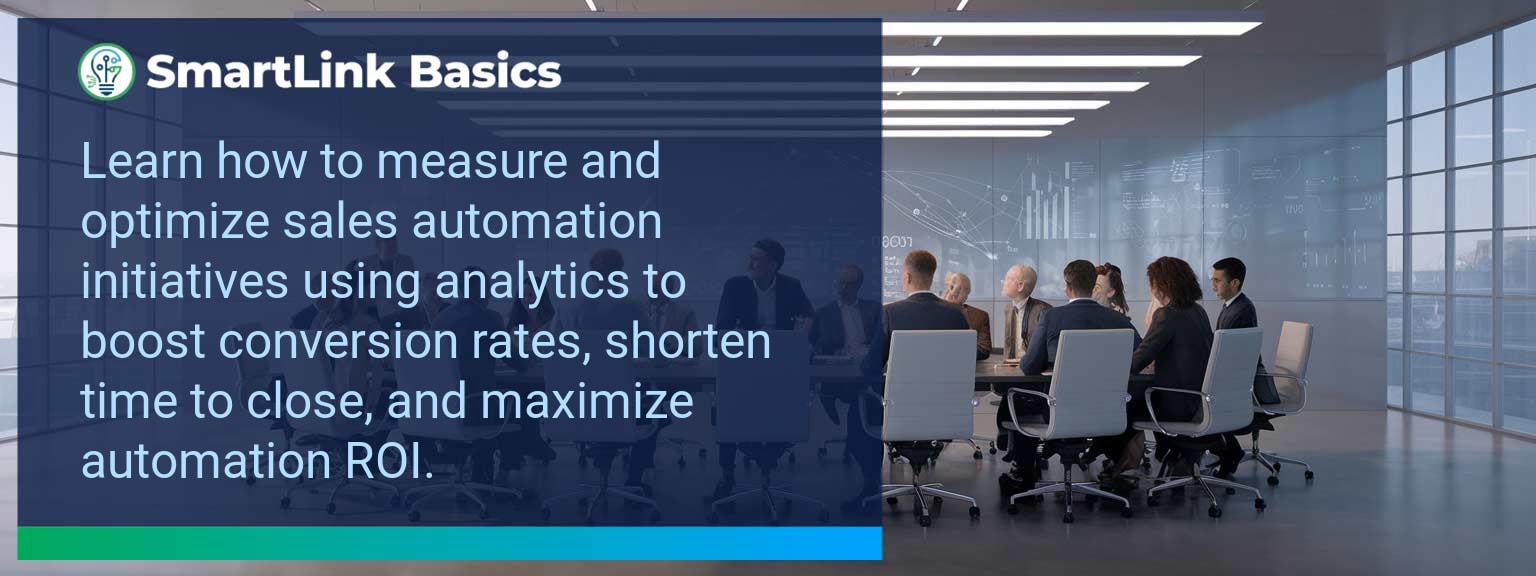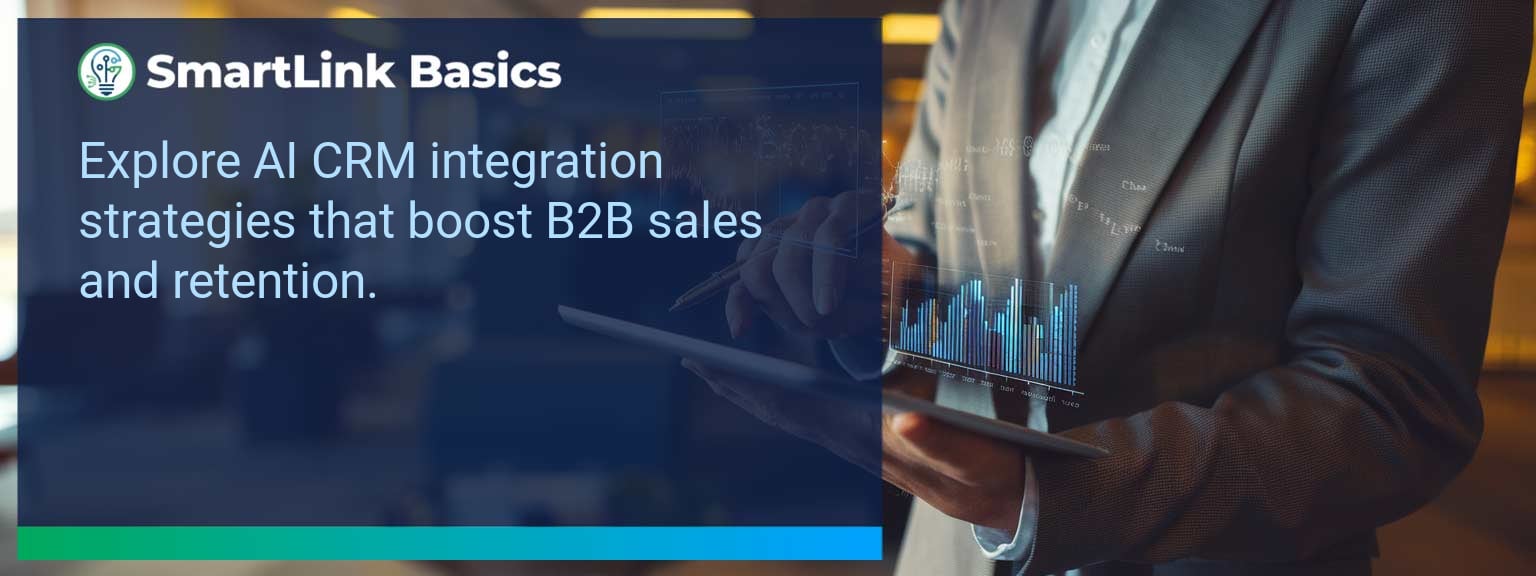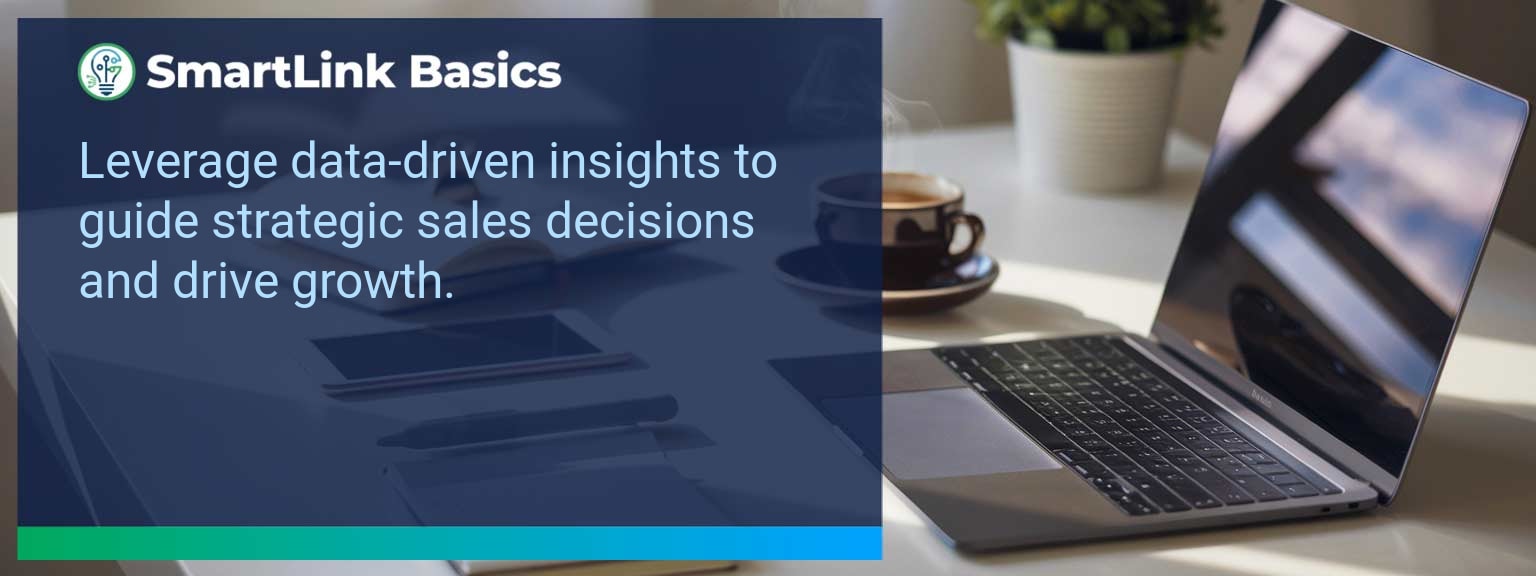Industry data shows that organizations adopting AI-driven automation achieve cost reductions of up to 30% while accelerating sales cycles by 20% or more (McKinsey, 2024). For sales leaders, AI automated workflows now define competitive advantage, enabling teams to reallocate time from repetitive tasks to high-value engagements. At SmartLink Basics, we help decision-makers implement these systems strategically, ensuring they integrate with existing revenue operations. In this article, you’ll see how AI automated workflows power business outcomes, the common obstacles that slow adoption, and practical steps to optimize processes. You’ll walk away with proven examples, a 90-day action blueprint, and measurable KPIs to track results.
- Automate repetitive administrative and CRM updates with AI.
- Integrate machine learning to personalize outreach at scale.
- Streamline approvals, quotes, and contract workflows for speed.
- Use predictive analytics to prioritize sales opportunities.
- Track adoption and performance with targeted metrics.
AI Automated Workflows: What Changed and Why It Matters
AI adoption has shifted from experimental to operational, making automated workflows a standard in high-performing sales organizations. The real advantage lies in combining workflow automation with artificial intelligence workflows to optimize every step of the revenue process. Sales leaders now use AI to synchronize touchpoints, reduce manual inputs, and ensure faster execution. For example, a B2B SaaS leader introduced automated lead enrichment and routing, cutting qualification time by 60%. Actionable insight: Audit processes for time-intensive handoffs and apply AI where repeatability is high.Redesign the Revenue Operating System With AI Automated Workflows
ICP, Segmentation, and Targeting AI-enabled segmentation uses historical wins, firmographic, and behavioral data to dynamically update ICP profiles. This ensures targeting precision without quarterly re-work. Pipeline Architecture Automated workflows push opportunities through the right stages based on engagement signals. AI flags at-risk deals for intervention. Plays and Messaging Integrated automation tools deliver personalized sequences based on buyer activity, increasing relevance at every touchpoint. Operating Cadence AI schedules follow-ups, forecast calls, and account reviews based on actual pipeline movement rather than static calendars. Actionable insight: Implement automation that adapts in real-time to both internal and buyer-driven events.Common Obstacles To Achieving Seamless Automation
The most frequent challenges are fragmented systems, inconsistent data quality, and cultural resistance. Without a unified data layer, automation amplifies errors rather than solving them. Coca-Cola Europacific Partners reported needing a full data governance upgrade before AI could improve sales workflows. Leaders must first assess infrastructure readiness and train teams to trust AI-influenced recommendations. Actionable insight: Before deployment, establish clean data practices and a single source of truth.Implementing AI To Optimize Workflows
Effective deployment of AI process optimization starts with mapping current-state processes, identifying friction points, and matching them with automation tools. For example, automating proposal generation based on CRM opportunity data can reduce turnaround from three days to one hour. Solutions combining business process automation platforms with machine learning integration enable continuous performance improvement. Actionable insight: Pilot in one high-impact stage, measure, and then expand.Tangible Benefits From Automated Processes
The benefits extend beyond time savings — sales leaders gain a scalable system. Tangible outcomes include faster quote-to-close, higher lead conversion, and better forecast accuracy. A manufacturing firm implemented AI-assisted order processing and cut errors by 40%, improving on-time delivery rates. Actionable insight: Track both speed and accuracy to measure workflow automation effectiveness.Metrics That Matter
| Category | Metric | Definition | Target |
|---|---|---|---|
| Leading | Workflow Completion Rate | % of automated sequences executed without manual intervention | 95%+ |
| Leading | AI Suggestion Adoption Rate | % of AI-generated action recommendations executed by reps | 80%+ |
| Lagging | Cycle Time Reduction | Decrease in time from lead entry to closed-won | 20%+ |
| Lagging | Revenue Per Rep | Average sales revenue generated per sales rep per quarter | +15% YoY |
| Quality | Automation Error Rate | % of workflows that trigger incorrect outcomes | <1% |
| Quality | Customer Satisfaction Post-Automation | Average CSAT score after automation implementation | ≥ 4.5/5 |
Innovations And Next Steps For AI Automation
Emerging capabilities like AI-generated playbooks, intent-driven dynamic routing, and integrated AR for virtual product demos are shaping the next wave of sales automation. Companies integrating these tools early will outpace competitors in speed and personalization. Actionable insight: Stay ahead by testing emerging automation features quarterly and aligning them with evolving buyer expectations.Get the 90-day plan, coaching rubric, and dashboard template to operationalize AI in your enablement program.
Turning AI Automation Into a Revenue Multiplier
AI automated workflows are now a strategic lever for predictable, scalable growth. This guide outlined current applications, adoption challenges, a 90-day execution plan, and measurable success criteria. To make automation pay off, sales leaders should integrate tools into one cohesive operating system and review results monthly for continuous improvement. Access more AI-driven sales enablement resources from SmartLink Basics to design a high-performance automation strategy. Accenture reports that sales teams leveraging AI for lead prioritization can increase conversion rates by over 50%. This transformation is not theoretical—it is actively reshaping how sales leaders allocate resources and engage clients. At SmartLink Basics, we recognize that AI sales tools are no longer optional; they are a competitive necessity. These platforms integrate machine learning, predictive analytics, and CRM automation to streamline workflows and amplify revenue impact. In this article, you will learn how to identify operational gaps, deploy AI-powered solutions, and measure the results. We will explore challenges, implementation strategies, and proven outcomes, equipping you with a clear plan to modernize your sales engine effectively.- AI sales tools improve forecast accuracy through predictive analytics.
- Automated lead scoring accelerates deal qualification.
- CRM automation reduces administrative workload.
- Machine learning optimizes messaging and timing.
- Integration of sales automation software boosts team productivity.
What Changed And Why It Matters Now For AI Sales Tools
AI sales tools have matured from isolated plug-ins to fully integrated sales technology solutions. The combination of artificial intelligence in sales and robust CRM automation now enables real-time coaching, instant insights, and automated data hygiene. This evolution has reduced the reliance on manual data entry and guesswork, replacing them with analytics-based decision-making. For example, a B2B SaaS company adopting AI-powered lead generation saw a 37% uplift in qualified opportunities within three months. Organizations that implement these systems early can establish competitive dominance through data-driven prioritization. The way forward is clear: align sales operations around AI-driven insights and embed automation into core processes.Redesign The Revenue Operating System With AI Sales Tools
ICP, Segmentation, and Targeting AI platforms can refine your Ideal Customer Profile by analyzing historical win data and buyer signals. This enables more precise targeting and better allocation of sales resources. Pipeline Architecture Sales automation software supports dynamic pipeline adjustments based on conversion probabilities, reducing stalled deals and improving throughput. Plays and Messaging Machine learning models can determine which messaging resonates most with specific personas, adjusting outreach in real time. Operating Cadence AI-integrated CRM systems can trigger follow-up tasks, automate reporting, and schedule engagement reminders. When connecting these elements, ensure your sales leaders use expert insights from SmartLink Basics to guide sequencing and change management.Common Struggles Faced By Modern Sales Teams
Even with advanced tools, sales leaders encounter data overload, low CRM adoption, and inconsistent pipeline discipline. These issues often stem from unclear ROI tracking and fragmented work processes. Inconsistent input quality can undermine the value of AI recommendations. One manufacturing firm introduced AI lead scoring without addressing training gaps, leading to mistrust in output. The solution lies in pairing technology adoption with process discipline and tailored coaching. Action: audit both technology stack and user workflows to ensure tool adoption is intentional and productive.Leveraging Technology To Drive Sales Success
Integrating AI sales tools requires more than licensing software; it demands structured enablement and change management. Leaders should focus on aligning AI capabilities with existing sales motions. Effective deployment ensures automation supports, rather than replaces, human judgment. A financial services team embedded AI-powered forecasting into weekly reviews and reduced variance by 18%. Action: make data literacy part of ongoing sales training to maximize the predictive value of AI investments.Proven Benefits Of Implementing AI In Sales
Organizations using predictive analytics sales systems have improved win rates and shortened deal cycles. AI-powered lead generation ensures sellers engage with prospects most likely to convert, raising overall ROI on outreach activities. Sales performance optimization through machine learning insights reduces manual errors and saves time. For example, a mid-market IT solutions provider cut outbound prospecting time by 40% through AI-led account prioritization. Action: track time saved and reinvest it into high-value customer engagement.Predictions For Advancing AI In Sales
As processing power and data volumes expand, AI sales tools will deliver deeper contextual recommendations. Expect next-generation sales automation software to include sentiment analysis and adaptive pricing engines. The future will likely center on predictive personalization—matching offers and timing to individual buyer intent in real time. Teams that invest in data quality today will benefit most from these advancements. Action: implement rigorous data governance now to ease future AI transitions.Metrics That Matter
| Category | Metric | Definition | Target |
|---|---|---|---|
| Leading | AI-Qualified Lead Volume | Number of leads meeting AI-predicted conversion thresholds | +25% QoQ |
| Leading | Algorithm Adoption Rate | % of reps using AI scoring in daily workflows | 90%+ |
| Lagging | Forecast Accuracy | Variance between projected and actual revenue | ≤5% |
| Lagging | Revenue Per Rep | Total revenue ÷ active sellers | +15% YoY |
| Quality | Data Completeness Score | % of CRM records with full required fields | 95%+ |
| Quality | Rep Confidence in AI Output | Survey score on trust in AI recommendations | ≥4.2/5 |
Get the 90-day plan, coaching rubric, and dashboard template to operationalize AI in your enablement program.









